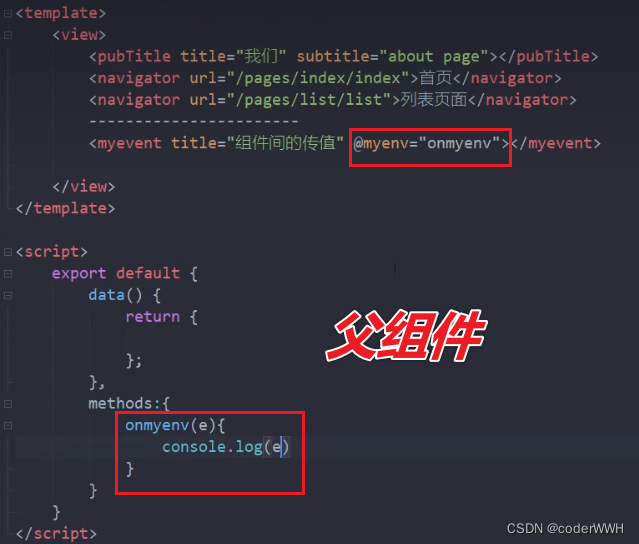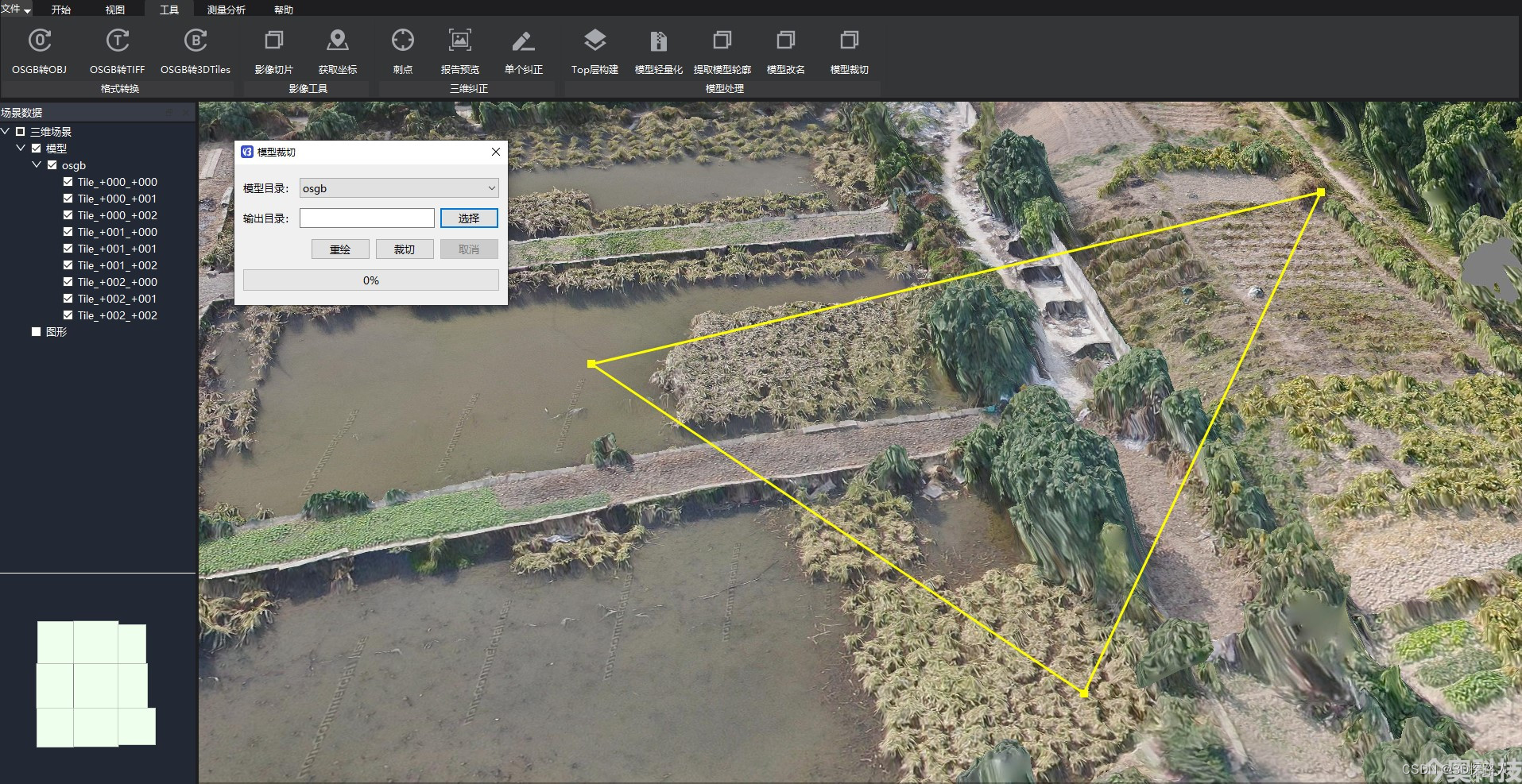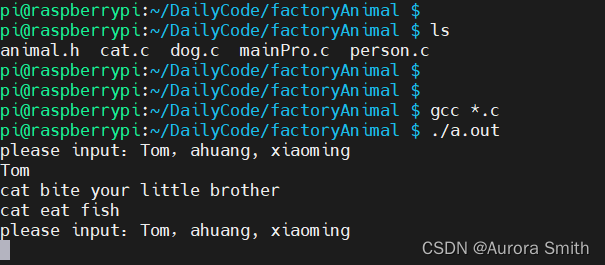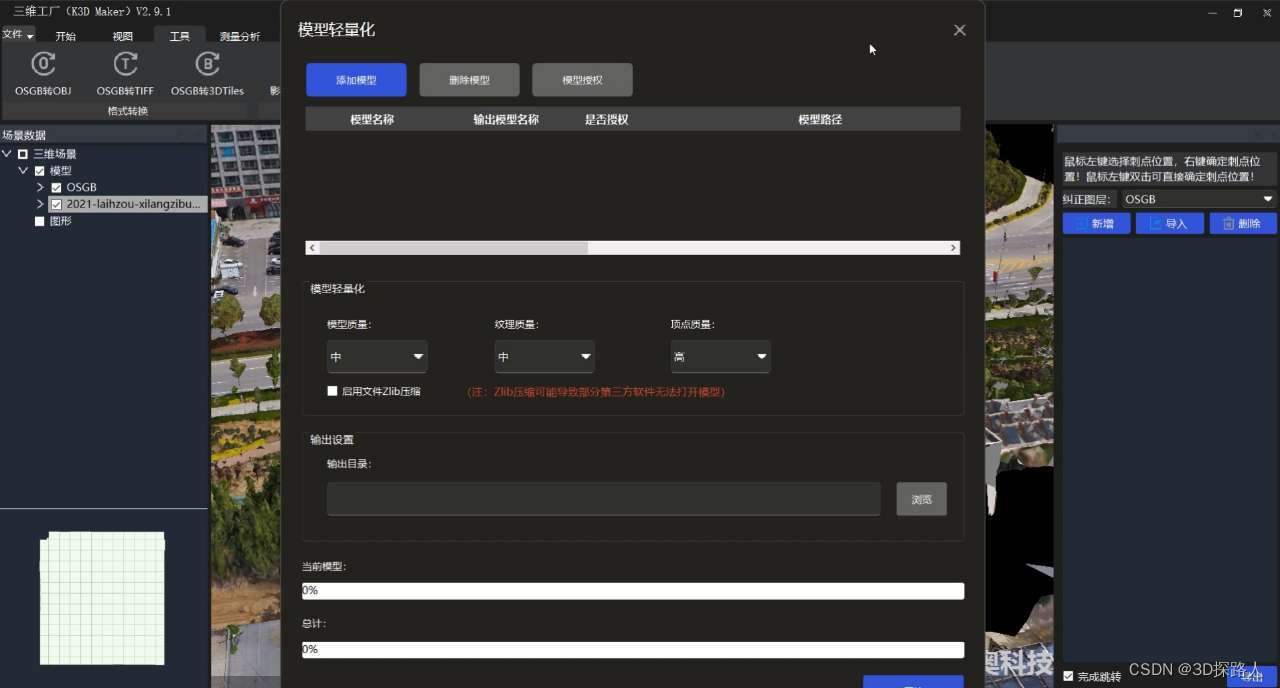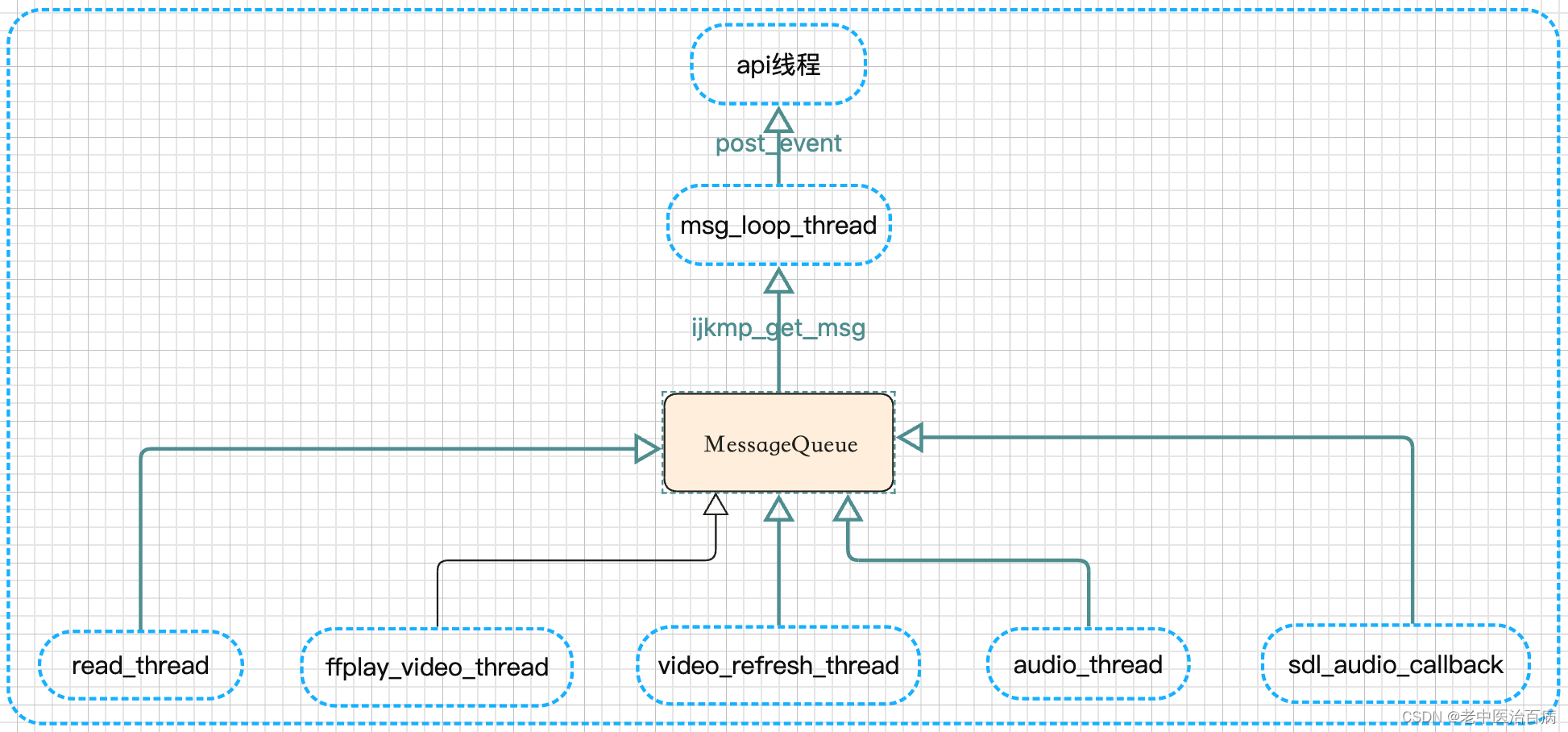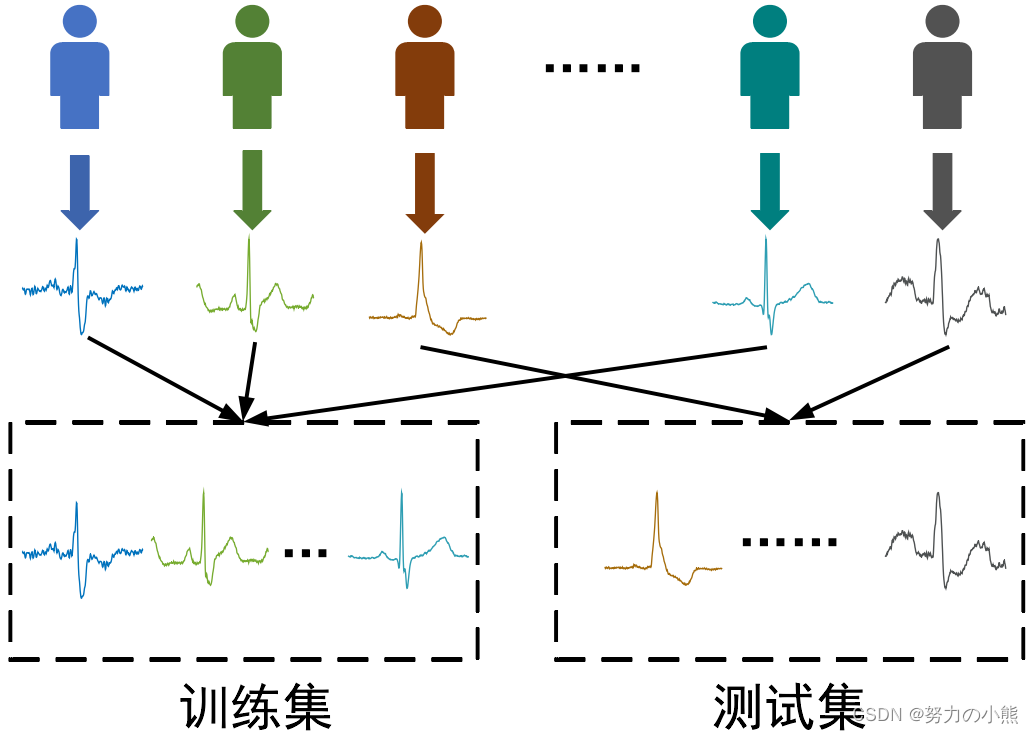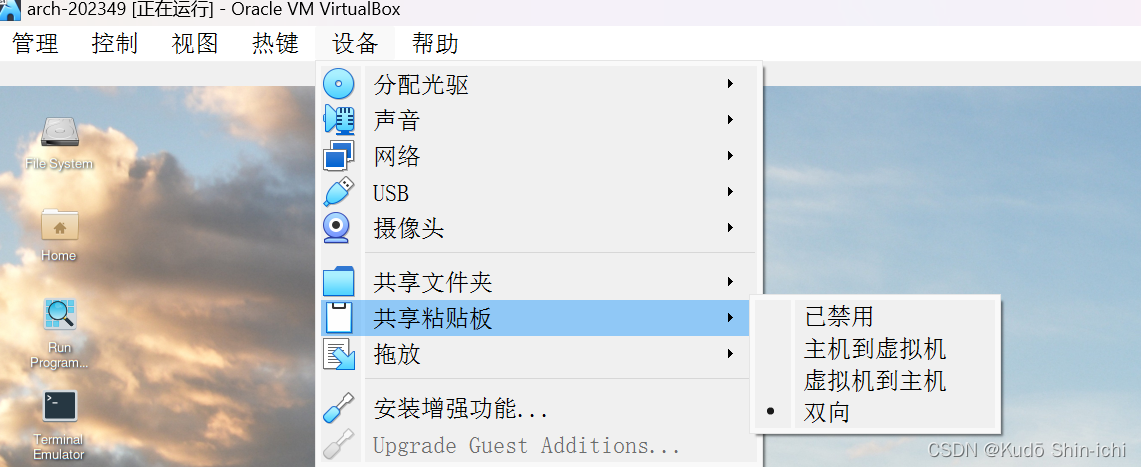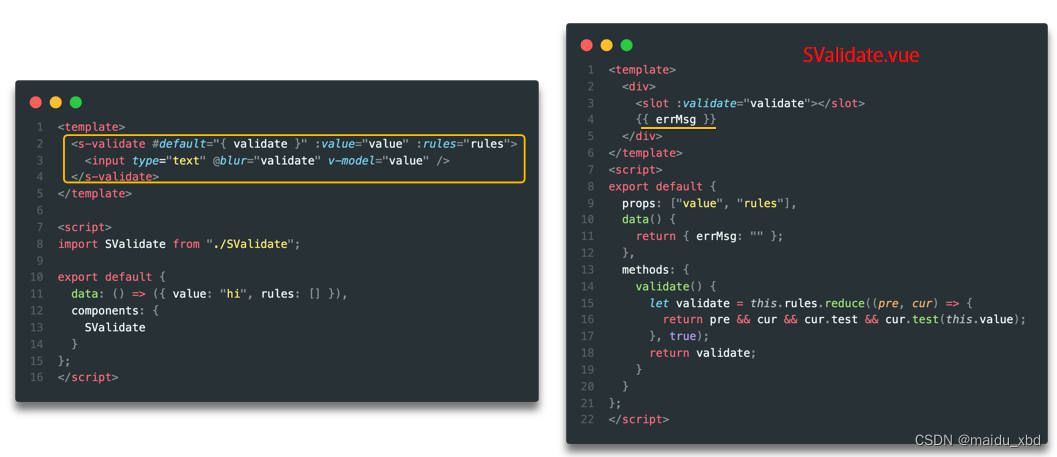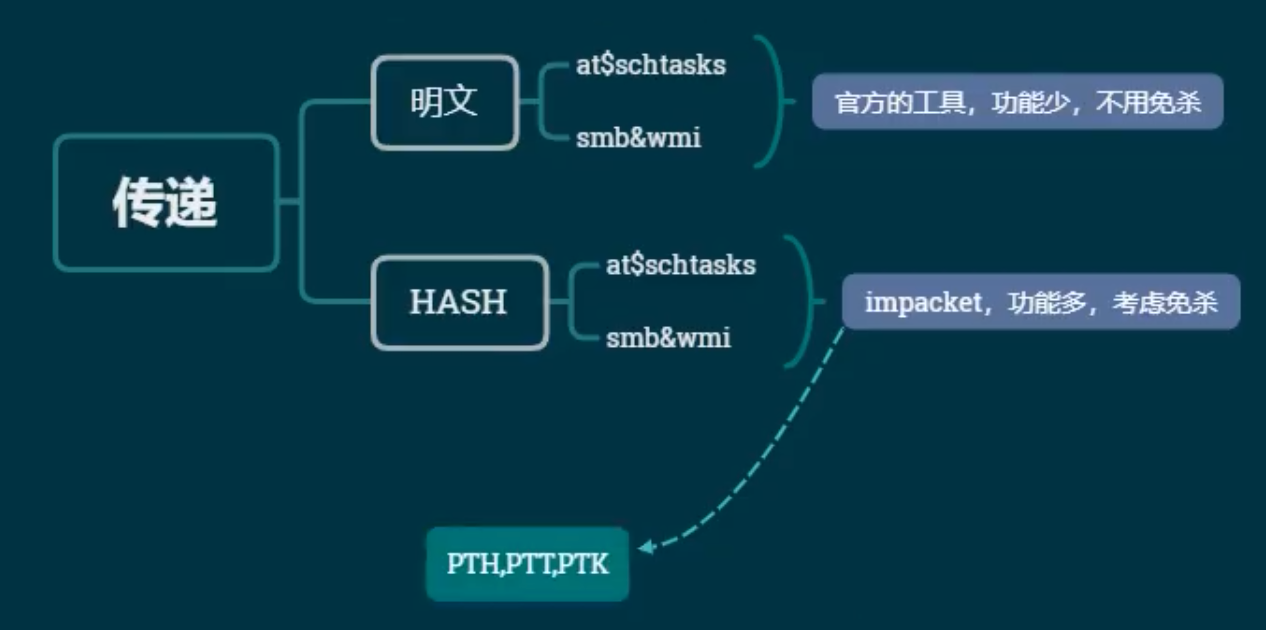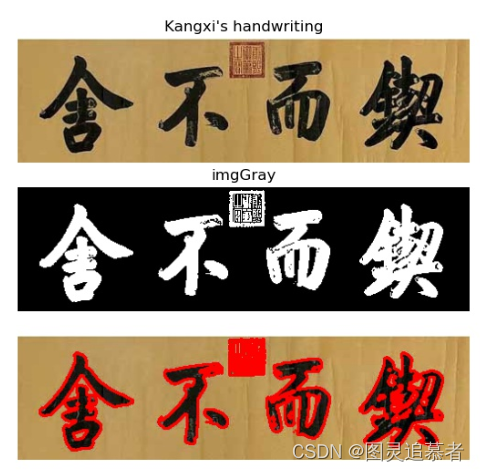目录
一、相关导读
1. Maven系列专栏文章
2. Mybatis系列专栏文章
3. Spring系列专栏文章
二、前言
Spring简介
Spring体系结构
三、Spring实现IOC
1. 创建Maven工程,引入对应依赖
2. 创建实体类,Dao接口及实现类
3. 编写xml配置文件
4. 测试从Spring容器获取对象
5. 测试结果
四、Spring容器类型
1. 容器接口
2. ApplicationContext容器实现类
3. 测试从磁盘读取配置文件
4. 测试结果
一、相关导读
大家如果对于本期内容有什么不了解的话也可以去看看往期的内容,下面列出了博主往期精心制作的Maven,Mybatis等专栏系列文章,走过路过不要错过哎!如果对您有所帮助的话就点点赞,收藏一下啪。其中Spring专栏有些正在更,所以无法查看,但是当博主全部更完之后就可以看啦。
1. Maven系列专栏文章
| Maven系列专栏 | Maven工程开发 |
| Maven聚合开发【实例详解---5555字】 |
2. Mybatis系列专栏文章
| Mybatis系列专栏 | MyBatis入门配置 |
| Mybatis入门案例【超详细】 | |
| MyBatis配置文件 —— 相关标签详解 | |
| Mybatis模糊查询——三种定义参数方法和聚合查询、主键回填 | |
| Mybatis动态SQL查询 --(附实战案例--8888个字--88质量分) | |
| Mybatis分页查询——四种传参方式 | |
| Mybatis一级缓存和二级缓存(带测试方法) | |
| Mybatis分解式查询 | |
| Mybatis关联查询【附实战案例】 | |
| MyBatis注解开发---实现增删查改和动态SQL | |
| MyBatis注解开发---实现自定义映射关系和关联查询 |
3. Spring系列专栏文章
| Spring系列专栏 | Spring IOC 入门简介【自定义容器实例】 |
| IOC使用Spring实现附实例详解 | |
| Spring IOC之对象的创建方式、策略及销毁时机和生命周期且获取方式 | |
| Spring DI简介及依赖注入方式和依赖注入类型 | |
| Spring IOC相关注解运用——上篇 | |
| Spring IOC相关注解运用——下篇 | |
| Spring AOP简介及相关案例 | |
| 注解、原生Spring、SchemaBased三种方式实现AOP【附详细案例】 | |
| Spring事务简介及相关案例 | |
| Spring 事务管理方案和事务管理器及事务控制的API | |
| Spring 事务的相关配置、传播行为、隔离级别及注解配置声明式事务 |
二、前言
Spring简介
Spring是一个开源框架,为简化企业级开发而生。它以IOC(控制反转)和AOP(面向切面)为思想内核,提供了控制层SpringMVC、数据层SpringData、服务层事务管理等众多技术,并可以整合众多第三方框架。Spring将很多复杂的代码变得优雅简洁,有效的降低代码的耦合度,极大的方便项目的后期维护、升级和扩展。
Spring官网地址:Spring | HomeSpring官方网站:
Spring体系结构
Spring框架根据不同的功能被划分成了多个模块,这些模块可以满足一切企业级应用开发的需求,在开发过程中可以根据需求有选择性地使用所需要的模块。
- Core Container:Spring核心模块,任何功能的使用都离不开该模块,是其他模块建立的基础。
- Data Access/Integration:该模块提供了数据持久化的相应功能。
- Web:该模块提供了web开发的相应功能。
- AOP:提供了面向切面编程实现
- Aspects:提供与AspectJ框架的集成,该框架是一个面向切面编程框架。
- Instrumentation:提供了类工具的支持和类加载器的实现,可以在特定的应用服务器中使用。
- Messaging:为Spring框架集成一些基础的报文传送应用
- Test:提供与测试框架的集成
三、Spring实现IOC
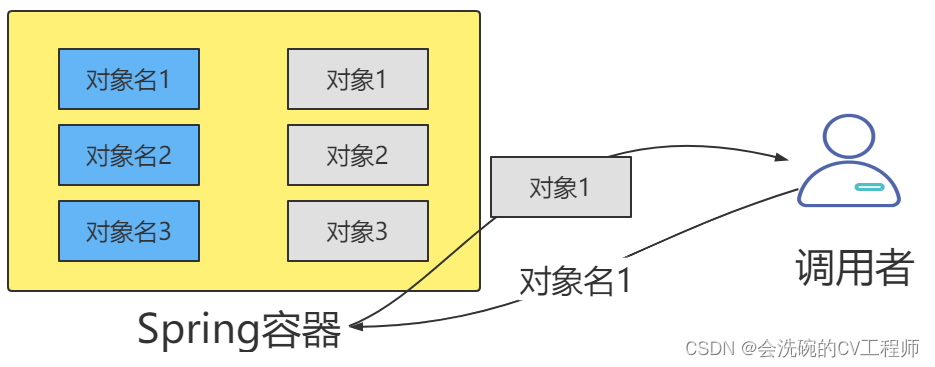
接下来我们使用Spring实现IOC,Spring内部也有一个容器用来管理对象。
1. 创建Maven工程,引入对应依赖
<dependencies>
<dependency>
<groupId>org.springframework</groupId>
<artifactId>spring-context</artifactId>
<version>5.3.13</version>
</dependency>
<dependency>
<groupId>junit</groupId>
<artifactId>junit</artifactId>
<version>4.12</version>
<scope>test</scope>
</dependency>
</dependencies>2. 创建实体类,Dao接口及实现类
Student实体类
package com.example.pojo;
public class Student {
private int id;
private String name;
private String address;
public Student(int id, String name, String address) {
this.id = id;
this.name = name;
this.address = address;
}
public Student(){}
public int getId() {
return id;
}
public void setId(int id) {
this.id = id;
}
public String getName() {
return name;
}
public void setName(String name) {
this.name = name;
}
public String getAddress() {
return address;
}
public void setAddress(String address) {
this.address = address;
}
@Override
public String toString() {
return "Student[ " +
"id=" + id +
", name='" + name + '\'' +
", address='" + address + '\'' +
" ]";
}
}
StudentDao接口
package com.example.dao;
import com.example.pojo.Student;
public interface StudentDao {
// 根据id查询学生
Student findById(int id);
}
StudentDao接口实现类StudentDaoImpl1
package com.example.dao;
import com.example.pojo.Student;
public class StudentDaoImpl1 implements StudentDao{
public StudentDaoImpl1() {
}
public StudentDaoImpl1(int a){};
@Override
public Student findById(int id){
return new Student(id,"程序员","北京");
}
}
3. 编写xml配置文件
<?xml version="1.0" encoding="UTF-8" ?>
<beans
xmlns="http://www.springframework.org/schema/beans"
xmlns:xsi="http://www.w3.org/2001/XMLSchema-instance"
xsi:schemaLocation="http://www.springframework.org/schema/beans
http://www.springframework.org/schema/beans/spring-beans.xsd"
default-autowire="constructor">
<bean id="studentDao" class="com.example.dao.StudentDaoImpl1"/>
</beans>4. 测试从Spring容器获取对象
package com.example;
import com.example.dao.StudentDao;
import com.example.service.StudentService;
import org.junit.Test;
import org.springframework.context.ApplicationContext;
import org.springframework.context.support.ClassPathXmlApplicationContext;
import org.springframework.context.support.FileSystemXmlApplicationContext;
public class TestContainer {
@Test
public void t1(){
// 创建Spring容器
ApplicationContext ac = new ClassPathXmlApplicationContext("bean.xml");
// 从容器中获取对象
StudentDao studentDao1 = ac.getBean("studentDao",StudentDao.class);
StudentDao studentDao2 = ac.getBean("studentDao",StudentDao.class);
System.out.println(studentDao1.hashCode());
System.out.println(studentDao2.hashCode());
System.out.println(studentDao1.findById(1));
}
}5. 测试结果

OK,同样返回两个对象的哈希值都是一样的,说明了确实是从容器中获取同一个对象。
四、Spring容器类型
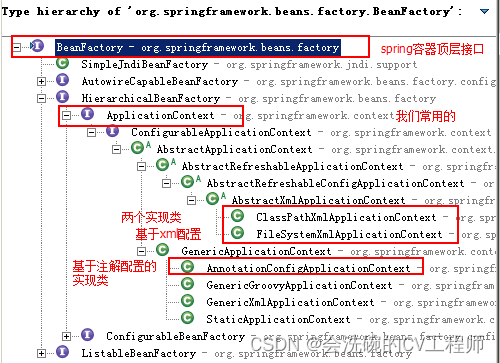
1. 容器接口
- BeanFactory:BeanFactory是Spring容器中的顶层接口,它可以对Bean对象进行管理。
- ApplicationContext:ApplicationContext是BeanFactory的子接口。它除了继承 BeanFactory的所有功能外,还添加了对国际化、资源访问、事件传播等方面的良好支持。ApplicationContext有以下三个常用实现类:
2. ApplicationContext容器实现类
- ClassPathXmlApplicationContext:该类可以从项目中读取配置文件
- FileSystemXmlApplicationContext:该类从磁盘中读取配置文件
- AnnotationConfigApplicationContext:使用该类不读取配置文件,而是会读取注解
3. 测试从磁盘读取配置文件
@Test
public void t2(){
// 创建spring容器
ApplicationContext ac = new FileSystemXmlApplicationContext("C:\\JavaProjects\\06SSM_Projects\\springdemo\\spring_ioc1\\src\\main\\resources\\bean.xml");
// 从容器中获取对象
StudentDao userDao = ac.getBean("studentDao",StudentDao.class);
System.out.println(userDao);
System.out.println(userDao.findById(1));;
}4. 测试结果

OK,本次使用Spring实现IOC就到这里了,上述讲到的三个实现类会在接下来中多次使用,希望对大家有所帮助
